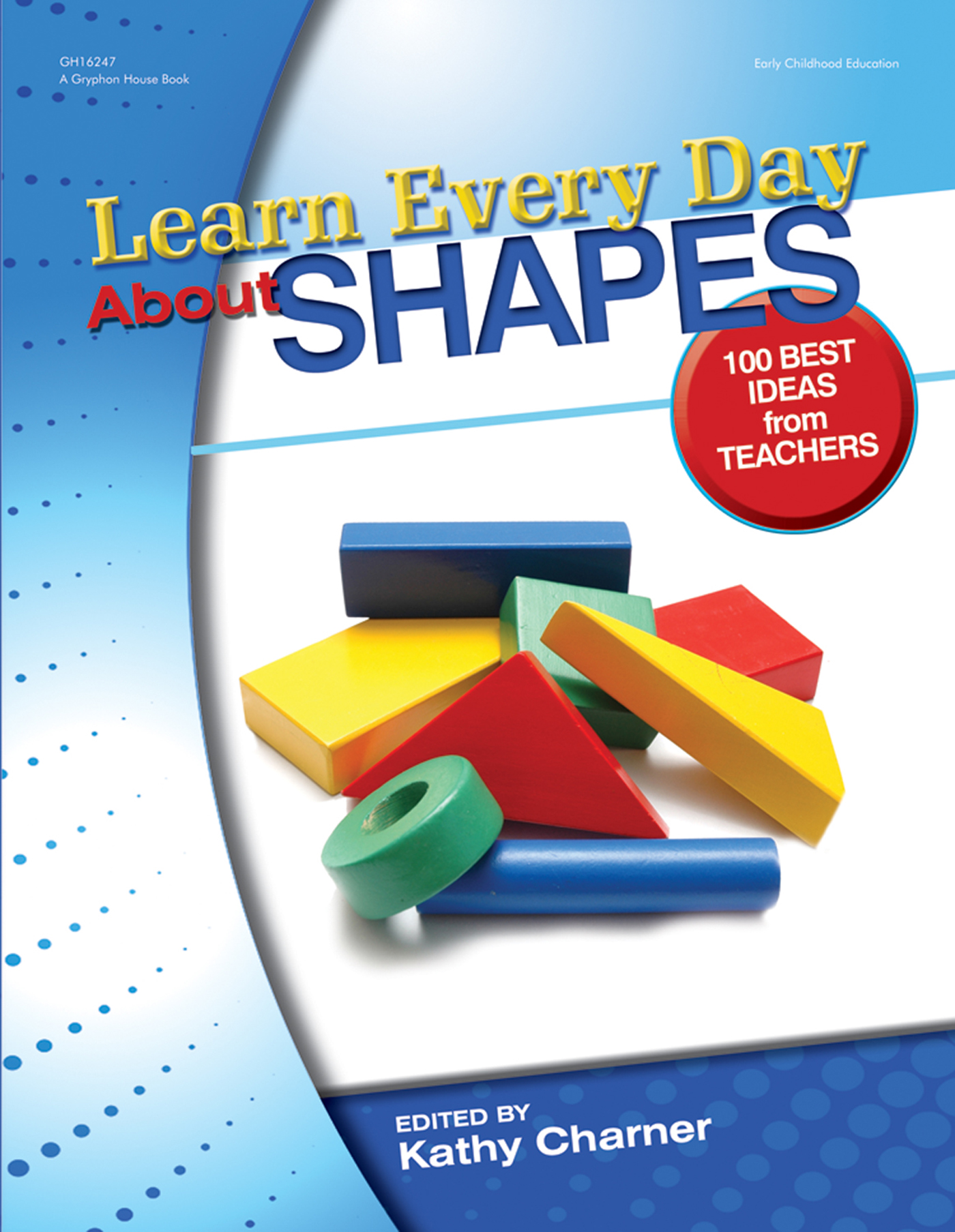Materials
scissors (adult only)
tag board (1 piece per child) large piece of posterboard marker pictures, transparencies, and other visual examples of shapesInstructions
l Cut out the poster or tag board into circles, rectangles, squares, and triangles.
What to Do
1. Engage the children in a discussion about the shapes you cut out. Have the
children look around the room for these shapes.
2. Divide the children into four groups, one group for each shape.
3. Give each child one of the large shape cutouts. These will show the children
which groups they are in. (The narrator will need one of each shape as well.)
4. Recite the following with the children. Encourage them to come up with
examples of the shapes:
Teacher: There are many shapes.
(children in shape groups hold up
their cards and jump forward as the
teacher holds up their shape)
Rectangles! Triangles! Circles! Squares!
Teacher: We see these shapes all
around us. (show the children
images of objects that are the various
shapes and have them call out their
shape names when they see them)
Teacher: A rectangle can make a...
Children: Bed! Door!
Teacher: A triangle can make an...
Children: Ice cream cone! Pizza!
Teacher: A circle can make a...
Children: Penny! Ball!
Teacher: A square can make a...
Children: Window! Block!
Teacher: So many things are made
with shapes! (hold up shapes so the
children can call out their names)
Children: Rectangle! Triangle! Circle!
Square!
Look around! (children point in many
directions)
Shapes are everywhere!
Assessment
To assess the children's learning, consider the following:
l Can the children identify objects around the room that match the shapes?
l Can the children hold up the correct cards when you call out shape names?
